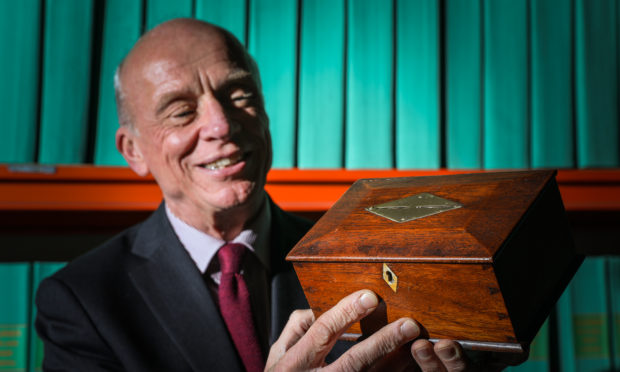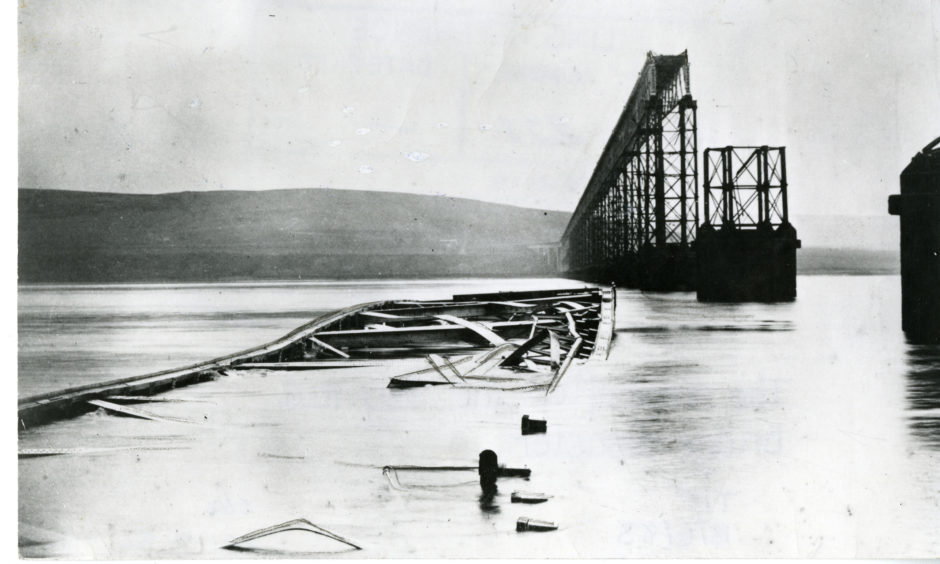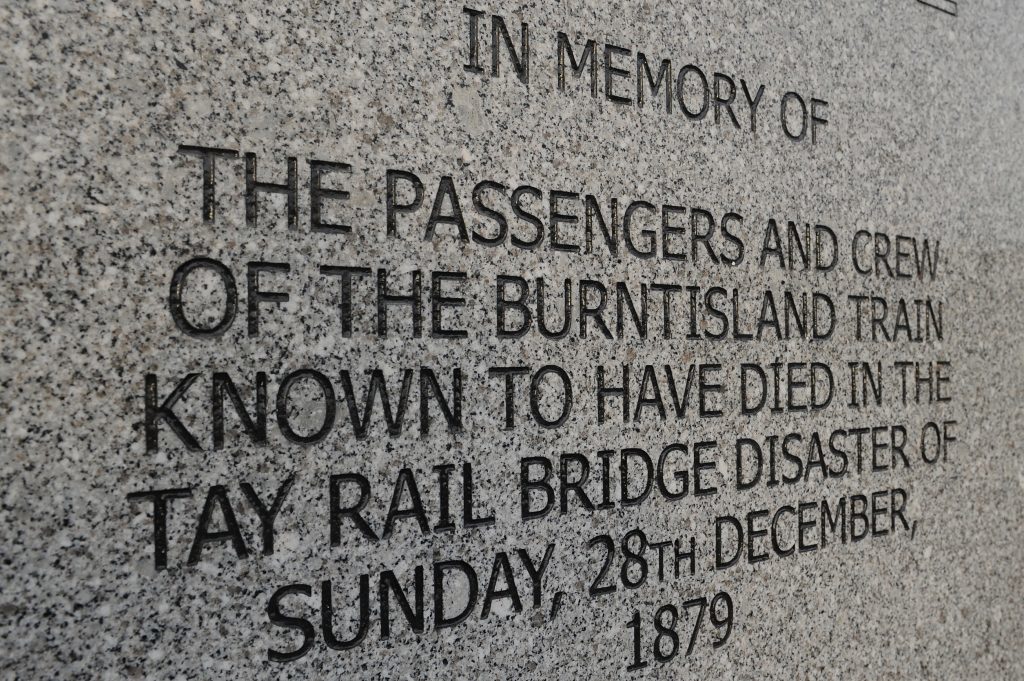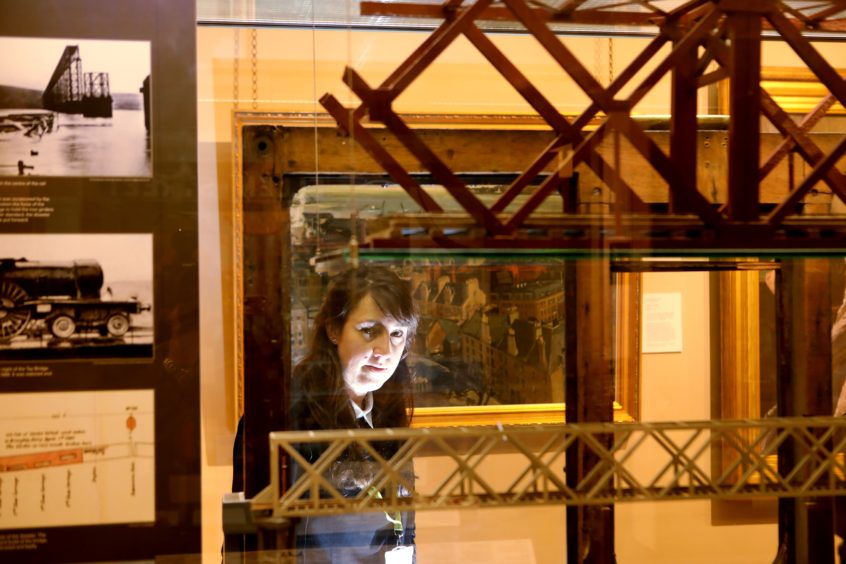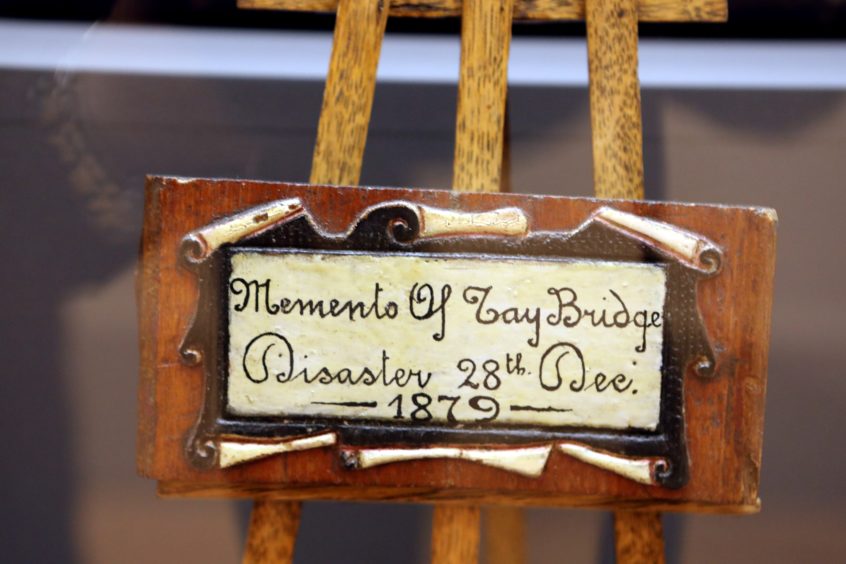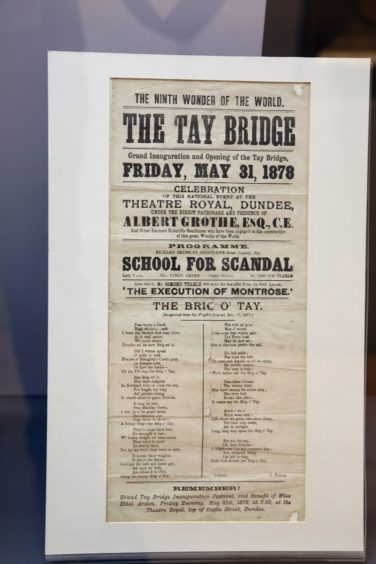A Dundee journalist and historian has shed fresh light on the aftermath of the Tay Bridge Disaster following The Courier’s recent coverage of the 140th anniversary of the tragedy.
Norman Watson got in touch with more detail about efforts to recover bodies and mail bags in the wake of the December 28 1879 bridge collapse – revealing that the mail carried on the stricken train had “long excited” postal historians.
“Back in the 1960s, one of Britain’s most eminent philatelists, Cecil Meredith of Dundee, established that only seven letters had survived,” explained Mr Watson.
“By then, these had found their way into some of the country’s most prestigious stamp collections.
“The late Dennis Collins, also of Dundee Philatelic Society, took on the detective work by scouring collections, auction catalogues and philatelic articles to come up with a total of 14 known letters from the disaster.
“Mr Collins also stated that six mail bags were on the train, but that only two were recovered – both washed up at Broughty Ferry and thereafter taken to Dundee Post Office, which then occupied the site of the present Courier building in Albert Square.
“This, however, appears to have been an underestimation.”
The Courier reported on December 30, 1879 that 40 mail bags, large and small, were carried on the ill-fated train.
Of those it said over 30 had been recovered. Two of them had been picked up in the middle of the river by the North British Railway steamer while crossing to Tayport.
Six bags had been found washed ashore at Broughty Ferry, followed by another three later the same evening.
These were despatched by taxi to Dundee by Miss Barclay, the postmistress at Broughty Ferry.
The dripping wet bags were brought into Dundee Post Office and their contents spread out on a large board before a huge fire.
Some of the letters were tied up in bundles, and those in the centre of the bundles were found to be in a fair state of preservation.
But others had their stamps washed off and had smudged addresses. Those that were legible were forwarded as soon as possible.
“Since Mr Collins’ research, I have been able to take the number of surviving letters to 20, most addressed to Dundee or Aberdeen,” continued Mr Watson.
“This total includes three examples in the McManus Galleries.
“These damp-stained envelopes are exceptionally rare and are sought after by the worldwide collectors of ‘disaster’ mail. Although rarely seen at auction, it usually takes a good four-figure sum to secure them a new home.”
Mr Watson is the owner of a money box made from the wood of one of the disaster carriages, which was displayed at the last major exhibition of Tay Bridge memorabilia in Dundee.
The Courier told recently how various items washed up in the aftermath of the tragedy were sometimes turned into trinkets.
Julie McCombie, social history curator at the McManus, also emphasises the human element of the tragedy when people visit the museum.
She said of the passengers: “They didn’t know that this was going to become a really important part of history and that lessons were going to be learned from it in terms of bridge design and construction.
“It was just after Christmas. We have a toy kettle. It could have been a gift for somebody. It could have been a grandma bringing it for a kid, or a child on the train going to visit someone.
“People were probably getting ready to get off when it happened. The recent Rep play expressed the human element of ordinary people going about ordinary life, and that’s something that we really focus on here.”
The McManus collection includes a launch-day programme celebrating how the bridge would revolutionise travel between Dundee and London as well as “souvenir” cups and saucers that reflected the excitement of Dundee being at the forefront of this technological revolution.
Julie said many of the “more human elements” were washed up on Broughty Ferry beach. As was customary at the time, collected items would be scavenged and made into souvenirs.
For example, the museum collection includes a tiny easel carved from railway carriage wood and designed to “remember the dead”. A number of undelivered letters were also held in the McManus collection.
The names of the 59 people known to have died in the tragedy are listed on memorials at Wormit and Dundee Riverside which were erected in 2013.
